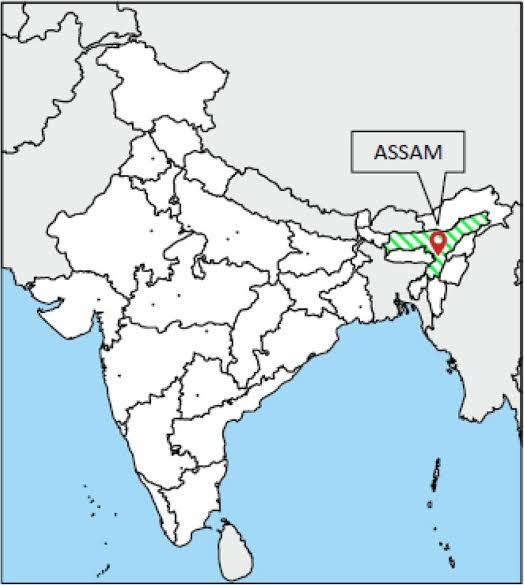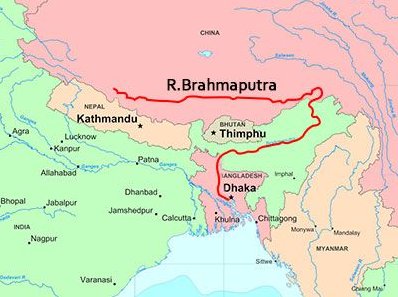The climate of Assam is Tropical Monsoon Type according to the Koeppen Climate Classification System. The region experiences a distinct wet and dry season, influenced by its proximity to the Bay of Bengal, the Brahmaputra River, and surrounding mountain ranges.

Table of Contents
Monsoon Season (June to September)
Assam’s climate is characterized by the monsoon season, which occurs from June to September. During this period, the southwest monsoon brings sufficient amounts of rainfall for its agriculture and overall ecosystem.
"Assam has a primarily tropical monsoon rainforest climate "

Assam receives one of the highest amounts of rainfall in India, with an average annual precipitation ranging from 2,500 to 3,000 millimeters. Continuous rain during the monsoon leads to flooding in certain areas, especially along the banks of the Brahmaputra River.
Dry Season (October to May)
The dry season prevails from October to May, with relatively lower rainfall and drier conditions compared to the monsoon months. Winters (November to February) are generally cool and comfortable, with temperatures ranging from 10°C to 25°C. Pre-monsoon months from March to May are relatively warmer, with temperatures rising to around 30° or higher during the day. The dry season is conducive to agricultural activities and outdoor tourism, given the pleasant weather.
Factors Affecting the Climate of Assam
Brahmaputra River: The presence of the Brahmaputra River significantly shapes the climate of Assam. The river valley acts as a channel for the monsoon winds, resulting in heavy rainfall in the region.

Himalayas and Eastern Himalayas: The Himalayas and the Eastern Himalayas to the north and northeast of Assam impact the climate. The mountains act as barriers to cold northern winds during winter, keeping temperatures relatively mild.
Bay of Bengal: The Bay of Bengal to the south of Assam also contributes to the region’s climate by influencing the monsoon winds and the onset of the southwest monsoon.
How Climate of Assam affects the Biodiversity of the Region?
The climate fosters a rich biodiversity and abundant vegetation. The state’s fertile plains and favorable weather support a variety of crops, with tea being a significant agricultural product. However, the region’s susceptibility to monsoon floods can pose challenges for agriculture and infrastructure development.

Koppen Classification of Assam
According to the Koppen climate classification, Assam’s climate can be categorized as a combination of two main climate types: Tropical Monsoon Climate (Am) and Humid Subtropical Climate (Cwa).
Tropical Monsoon Climate (Am): This climate type is prevalent in most parts of Assam, like Guwahati and Jorhat. The Am climate is characterized by high temperatures throughout the year and distinct wet and dry seasons.
Humid Subtropical Climate (Cwa): The Cwa climate is found in certain areas of Assam, particularly in the southern and southeastern parts of the state. This climate type is characterized by hot and humid summers and milder winters with moderate rainfall.
The combination of these two climate types makes Assam’s weather quite diverse.